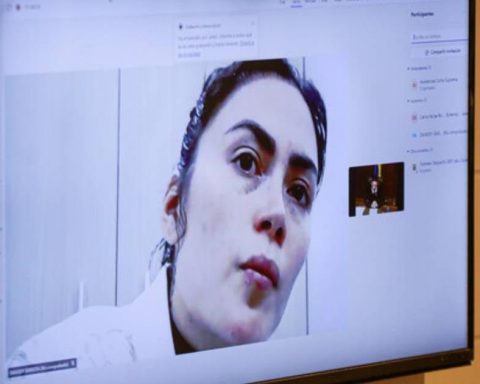It would be premature to be able to construct a comprehensive criterion on whether the reform planned by the National Government isIt will be as controversial as that of health and the pensionThe truth is that despite the fact that the Government has not yet shared the texts of the project, its bases and dynamics of its construction already allow us to visualize its course.
(Read: Prosecutor’s Office formulated a statement of charges against 4 former ANH officials).
It is remarkable that a government has finally taken itself seriously the need to make a structural reform to our labor system, Drafted by the fathers of labor law, but which today is faced with market realities and international criteria for the progressiveness of rights and guarantees, which are crying out for reform.
The purpose we wish to achieve would seem to be shared by the members of the tripartite commission: prosperous companies, decent working conditions, harmony in labor relations, greater coverage of the labor system and system insurance, legal stability and compliance with bombastic statements. of the constitution that have remained on paper, such as full employment.
The difficulties will depend on whether the means that the workers’ unions and the national government are planning, who act with evident alignment, will really allow us to reach the goals of the desired common goodor if perhaps there are aspects that can produce side effects that further affect the shortcomings of our labor market.
(Keep reading: Health reform confirms the fears of the EPS).
The pedagogical construction of Alejandro Gaviria’s criticism of the health reform started from the importance of sustaining any change, in a previous diagnosis. And it turns out that in labor matters there is a fully binding diagnosis built by the academy through the report of the Employment Mission. Among the main conclusions of said mission is that the labor system does not work well, taking into account that: (i) there are deficiencies in the protection mechanisms for the unemployed; (ii) the minimum wage is very high relative to the wage distribution; (iii) weakness in justice and a high degree of conflict, as well as; (iv) dysfunctions, by punishing business growth and productivity.
Based on the proposal published by the plants and the indications provided by the national government, we can anticipate that there will be aspects that would merit in-depth debates (But unfortunately, there will hardly be any, since the project is intended to be filed in March and approved by June of this year and so far in the subcommittee there have only been postulates and general ideas).
In the coming weeks we will be doing an analysis of the most relevant, but we will start with two of the most striking aspects of the last session in the subcommittee.
(Read: Overtime at night from 6 pm, a pillar of the labor reform).
The first of them, is related to absolute job stability. In other words, the impossibility of dismissing a worker without just cause and that, as a general rule, the termination of the employment contract is only allowed with just cause. A regulation in this sense would discourage the hiring of formal workers given the impossibility of terminating the contract without just cause in the future and, in addition, it would increase the conflict, since at the slightest fault the employer could claim to set up a just cause to justify his dismissal. even though there may not be.
It is without a doubt a controversial understanding of the principle of Stability in Employment that the Constitutional Court itself has analyzed in at least 20 sentences in a deep way With all due respect, instead, it should be approached from the protection mechanisms for the unemployed so that, during the employment transition, the State supports the unemployed; that, through the use of technology to bring the parties together, downtime is reduced; among many other initiatives that allow stability in employment from the offer.
The second of them is related to the obligatory nature of make wage increases in line with the CPI for all wages above the minimum wage. There is no doubt about the importance of workers not losing purchasing power and salary mobility, but being guided by a complex general percentage is not necessarily technical. A rule in this sense would lead to permanent inflation by having to adjust the rates of goods and services to the CPI to cover labor costs; He is unaware that Colombia is a country of regions and macroeconomic indicators such as unemployment or inflation vary drastically depending on the department and that the floor of the salary increase is always the CPI even when we have periods of hyperinflation can deepen this problem.
(See: Pension reform: the changes that Petro would seek to make to the system).
It’s a Limited understanding of wage mobility. In our concept, the minimum increases should understand regional and sector differences, should be guided by collective bargaining, within the framework of economic reality, accompanied by the search for salary competitiveness for companies that wish to attract the best talent. under the precepts of free competition.
SANTIAGO MARTINEZ MENDEZ
Expert in labor matters.

















